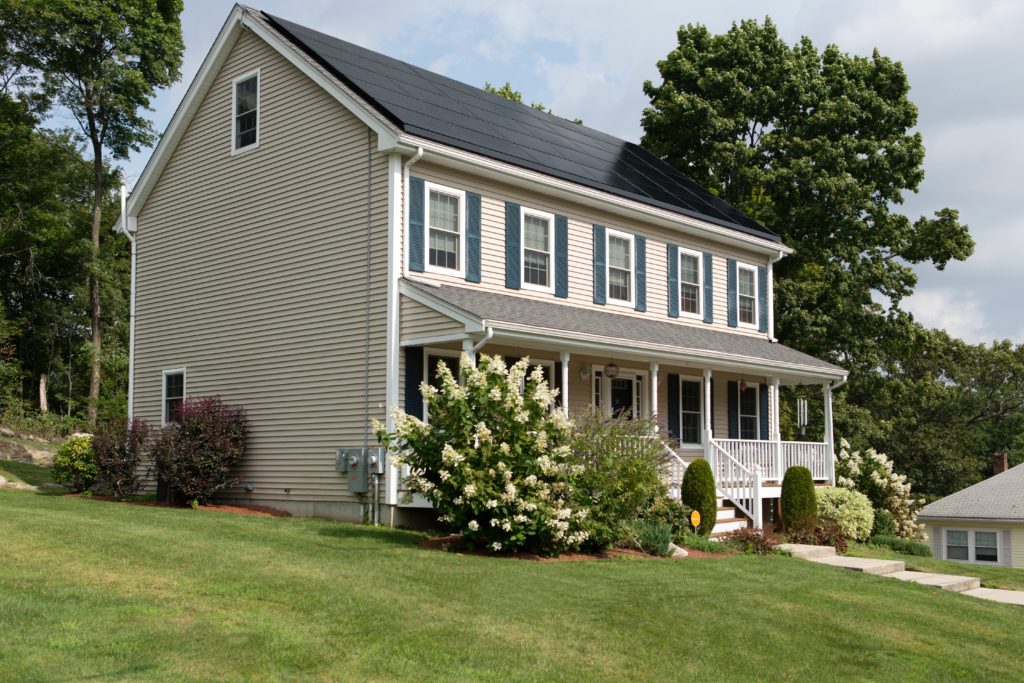Solar power is picking up steam across Washington, DC, and Maryland as homeowners learn more about how solar energy systems benefit them. One barrier preventing even more widespread adoption is confusion about the cost of solar installation and how many panels are required for specific home sizes.
While a solar evaluation from a professional installer is the best way to find out exactly how many solar panels your home needs, we’ve provided some guidelines that will help you estimate the range you’ll need.
What To Consider When Choosing the Number of Solar Panels
Before we get to calculations, there are a few factors to be aware of that will affect the number of panels your home requires.
- Local weather: It can’t be sunny every day, and your system’s efficiency varies based on the weather conditions. It’s good to add about 25% to your estimate to account for rainy or snowy weather.
- Panel wattage: Not all solar panels are created equal. They typically range from 250 to 400 watts, so choosing lower wattage means purchasing more panels for the same energy output.
- Energy usage: The more people in your home using electricity, the more solar panels you’ll need. A single-person home will use much less energy than a family of four in a home of the same square footage.
Calculating Your Number of Solar Panels
To find out how many solar panels you need to completely power your home, you can use a three-factor formula based on:
- Your annual energy usage
- Solar panel wattage
- Production ratios
The simplest way to find your annual electricity usage in kilowatt-hours (kWh) is to find it on your bill or through your utility’s online tools. The national average is about 11,000 kWh annually. If you aren’t sure of the solar panel wattage you’ll be purchasing, it’s generally safe to calculate with a middle-ground wattage of 300.
Production ratio is the ratio of output in kWh to the system size in watts. In the sunniest areas like California, production ratios can reach as high as 1.6, while cloudier areas with more rain may only have a production ratio of 1.2 or so.
Once you have these three numbers, the calculation is as simple as: Energy output / production ratio / panel wattage.
How Many Solar Panels Do I Need for a House Less Than 1,500 Square Feet?
The average home in the U.S. is around 1,500 square feet, and uses about 11,000 kWh of electricity per year. Assuming a mid-range production ratio of 1.4 and panel wattage of 300, our calculation is 11,000 kWh / 1.4 / 300, leaving us with a rounded result of 26 panels to power the whole home.
How Many Solar Panels Do I Need for a 1,500-to-2,500-Square-Foot House?
A 2,500-square-foot home uses about 12,300 kWh per year, leaving us with the calculation 12,300 / 1.4 / 300 and a result of 29 solar panels to satisfy average energy needs.
How Many Solar Panels Do I Need for an Over-2,500-Square-Foot House?
Once you get into the upper ranges of square footage, electricity goes up, and more panels are needed. A 3,000-square-foot home uses about 14,200 kWh per year for an equation of 14,200 / 1.4 / 300 and a result of 34 panels.
Design Your Ideal Solar Power System With Revolution Solar
If you’re interested in going solar in Maryland or the Washington, DC area, trust Revolution Solar. As the region’s number one solar installer, we can quickly evaluate your home to determine how many panels you need to fulfill your energy and savings goals.
Call (202) 827-6527 today or contact us online to set up a consultation.


Thanks for sharing awesome article about home solar panels and give all informative knowledge according this topic.
Determining the number of solar panels you need is crucial for a successful solar installation. Factors like energy consumption, location, panel efficiency, and desired energy goals all play a role. Consulting with a solar professional is recommended to accurately calculate the number of panels needed for your specific situation.
Wow, you opened my mind by suggesting that a standard home would require at least 26 solar panels to generate its electricity. Many neighbors of mine plan to transition to a more sustainable energy source for their houses. I suppose they could take a closer look into this option before making an installation.